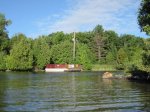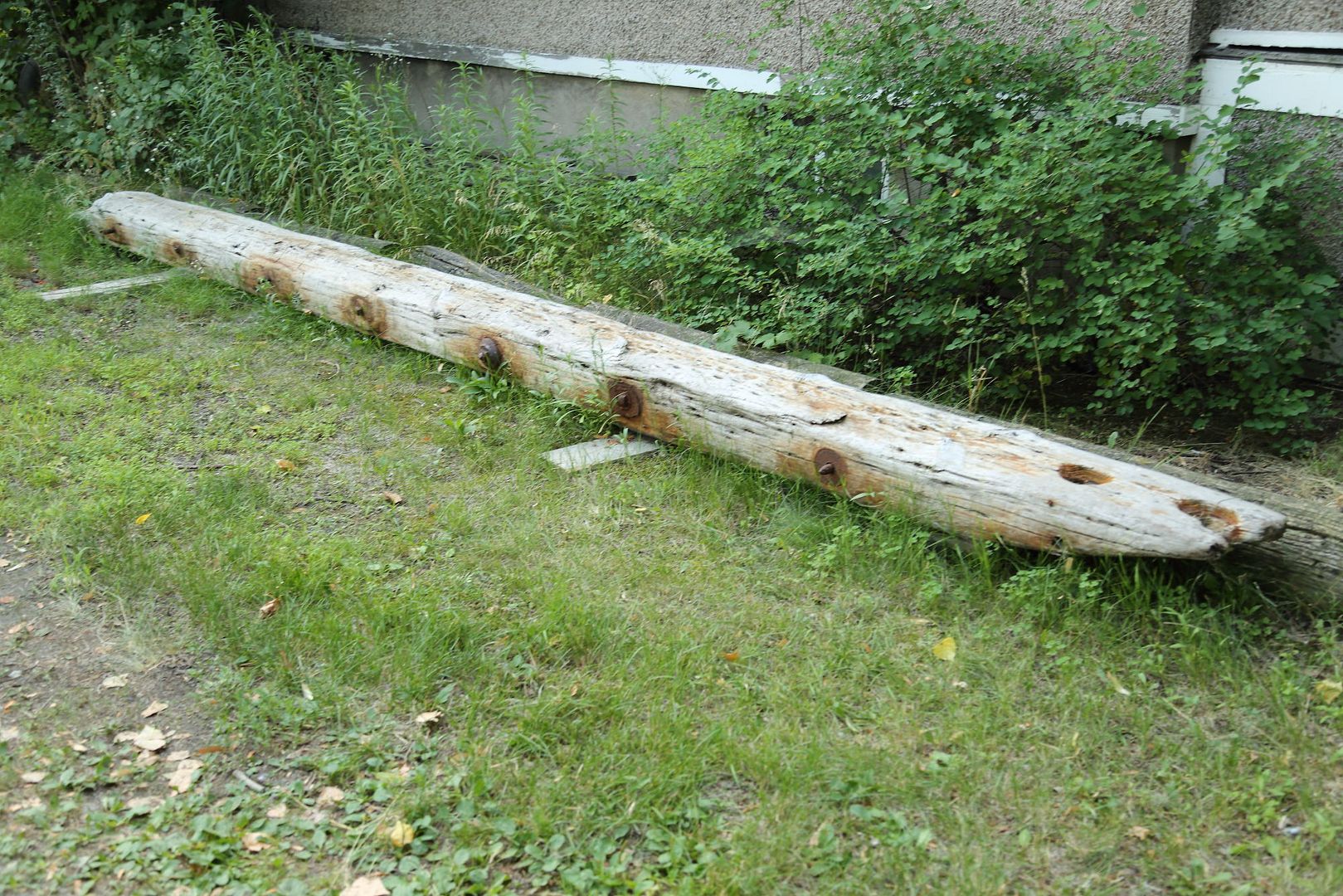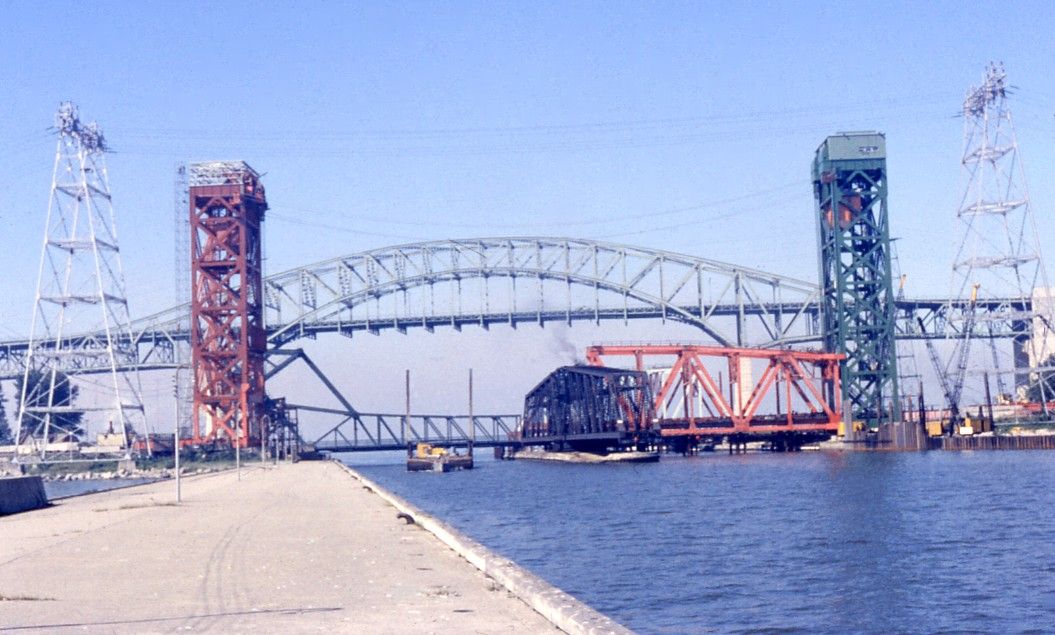scotto
06-26-2014, 10:50 PM
“I have found a little more information on the building of the piers in a book by Marjorie Freeman Campbell, the book is named A Mountain and a City
__________________________________________________ ________
Maps also indicate the rapid development of the town. In 1830 a Hamilton map by Lewis Burwell shows a hundred acres surveyed. Six years later one by Alexander Mackenzie shows eight hundred acres.
This increase in population and extension of boundaries was due largely to the building of the Burlington Bay canal. On March 19th, 1823, an act of parliament authorized construction of a navigable waterway to replace the shallow natural outlet which provided passage only for small schooners and the flat bottomed batteaux used widely at that time in the carrying trade. With larger vessels, cargo was unloaded on the Lake Ontario side of Burlington Beach and trans-shipped. The new canal was built in its present location, south of the natural inlet which was later filled in.
Although reports show a "drudge" was used in construction of the canal, the work was done mainly by hand with pick and shovel and required an army of labourers. From far and near workmen flocked in, many bringing their own wagons, teams and tools. Hamilton became their headquarters and to accommodate them, dwellings, storehouses, barns and wharves sprang up along the bay shore—unpretentious frame homes mostly, with a sprinkling of better class residences. In the resultant boom, land and water lots were at a premium, capital was attracted, and wharf building flourished.
Simultaneously receiving attention was the project of Pierre (Peter) Desjardin7 to cut Coote's Paradise by a canal which would permit ships entering Burlington Bay to proceed by the natural navigation route— across the bay and north of the present Valley Inn—into the marsh and by canal to Dundas. On November 1st, 1820, Desjardin's petition for land and water rights was granted. Not until January 30th, 1826, however was the Desjardins Canal Company (capital, £10,000) incorporated to construct a canal three to four miles in length, including natural naviga¬tion within the marsh. Unfortunately Peter Desjardin did not see his dream realized. His death on September 7th, 1827, postponed the opening of the canal for another decade.
Simultaneously John Gait, founder of the Canada Land Company, after whose family Gait, Ontario, is named, determined to profit in the new mercantile era. Applying for land adjacent to the Burlington canal, Gait planned to establish a depot where immigrants and cargo might be unloaded and forwarded overland to Guelph and other hinterland points. His plan was confounded by the impossible roads of the day.
In the meantime the Burlington canal had gone its own way. In 1829 Hamilton's first steamer, the John By, a barge equipped with engines and paddles and drawing only two and one-half feet of water, is reported as running between Hamilton and Toronto, taking a day and night for the trip. In keeping with the times her first cargo was whiskey.
Accounts of the canal are conflicting but pieced together provide a fairly accurate overall story. "The Burlington canal," wrote George E. Mason, "was commenced in 1823 and completed in 1826 by Captain John McKeen and James G. Strowbridge, both of whom are buried at the southeast corner of King and Wellington Streets.9 The width of the canal was originally only 30 feet. Prior to the digging of this canal Ancaster . . . (had) in 1818 twenty prosperous stores; but many of her most enterprising business people, such as Edward Jackson, Richard and Samuel Hatt, &&, removed to Hamilton on the opening of the canal."
Contractors of the canal we find listed as Spohn & Mann; while Inspector J. H. Smith, county historian, gives the complete cost of the project as $94,000.
By an act, dated February 17th, 1827, the provincial legislature provided for a survey of works at the Burlington canal and further aid to complete the same. Autumn and spring gales and winter ice undoubtedly took heavy toll of the channel. In a report submitted in the autumn of 1828 to the canal commissioners—William Chisholm, William Applegarth and John Aikman—William Johnson Kerr, superintendent, gives a graphic picture of canal renovation of that day with the tools available.
I ... put the Drudging Machine in repair, and commenced deepening the Canal about the l0th May . . . and by the l0th June I discontinued the Drudge, having a depth of water averaging twelve feet through.
I then began repairing the South Pier which was in a very Shattered State—I carried it out 800 feet upon the foundation laid by Mr. Hall (first superintendent) 200 feet of it had been washed away six feet below the surface of the water and the other 600 feet I took down principally to the water level—which I have tied with timber of one foot square fastened with two inch treenails 22 inches long.
The whole 800 feet are perfectly filled with heavy stones, 700 feet of this pier I have decked over with 2 and 3 inch plank, crossing the top ties at every four feet—well spiked with seven inch spikes—with heavy oak gunwales on both sides . . . secured with treenails and iron bolts, 22 and 18 inches long. To protect the foundation of the pier 40 cords of larger boulders from the Islands below Kingston were deposited on the south side, thus giving the ground swell an easier ascent upon the pier. The north pier was similarly repaired and 100 feet that had been washed away renewed.
In concluding, the superintendent suggested the need of bridging the canal after navigation closed, for the convenience of travellers and because of the expense of the ferry, which cost five pounds per month in wages to the ferryman who attended "late and early as well as on Sunday." That the suggestion bore fruit seems proved by an item which appeared in the Gore Balance, Vol. 1, 45, October 1, 1830: "The Swing Bridge over the Burlington Bay Canal will be opened October 2, 1830."”
Scott, does the author provide a reference for the information about the boulders having come from an island near Kingston? ‘Kingston’ is quite a distence to haul stone, given that the Niagara Escarpment, is right here, and stone was being gathered by stone hookers in the area.
Perhaps the stone was from the Kingston area. but it hadn’t been brought for the purpose of the Burlington Canal construction. But rather was used as ballist.
Sailing ballast is ballast is used in sailboats to provide moment to resist the lateral forces on the sail. Insufficiently ballasted boats will tend to tip, or heel, excessively in high winds. Too much heel may result in the boat capsizing. If a sailing vessel should need to voyage without cargo then ballast of little or no value would be loaded to keep the vessel upright. Some or all of this ballast would then be discarded when cargo was loaded.
https://en.wikipedia.org/wiki/Ballast#History


